Australia’s national flags – the blue ensign, the Aboriginal flag and the Torres Strait Islander flag – are important symbols. They represent connections, pride and much more. All three are usually flown together, symbolising Australia’s shared histories.
Learn more about flags
The history of official flags, including the Flags Act, which came into effect in 1954.
The athletic champion carried the Australian and Aboriginal flags at international sporting events.
New flag for an independent nation
For a long time after colonisation, Australia’s national flag was the Union Jack, a legacy of Australia’s enduring relationship with Britain.
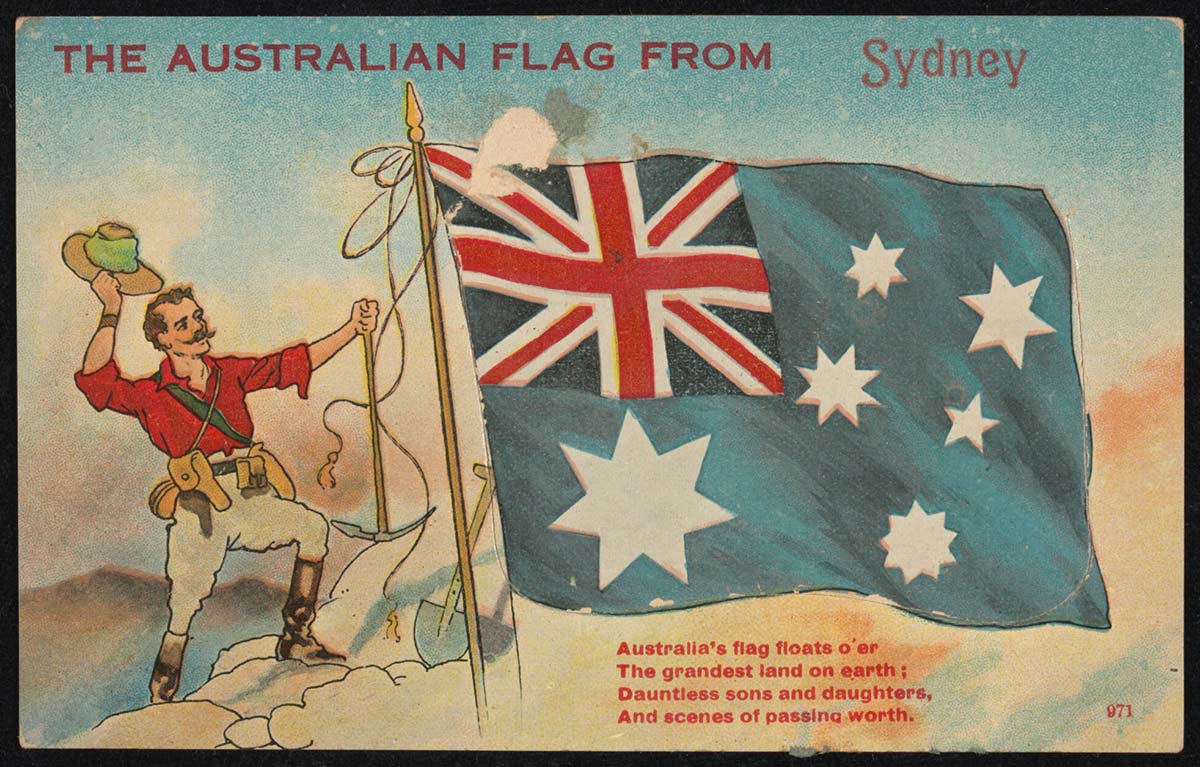
After Federation in 1901, a competition was held to design shipping ensigns for the new nation. The winning design featured the Union Jack, the Southern Cross and a six-pointed star representing the six states.
In 1908, when Australia acquired Papua as an external territory, a seventh point was added to the Federation Star to represent Papua and all subsequent territories.
The blue ensign became the country’s official flag in 1954.
Aboriginal and Torres Strait Islander flags
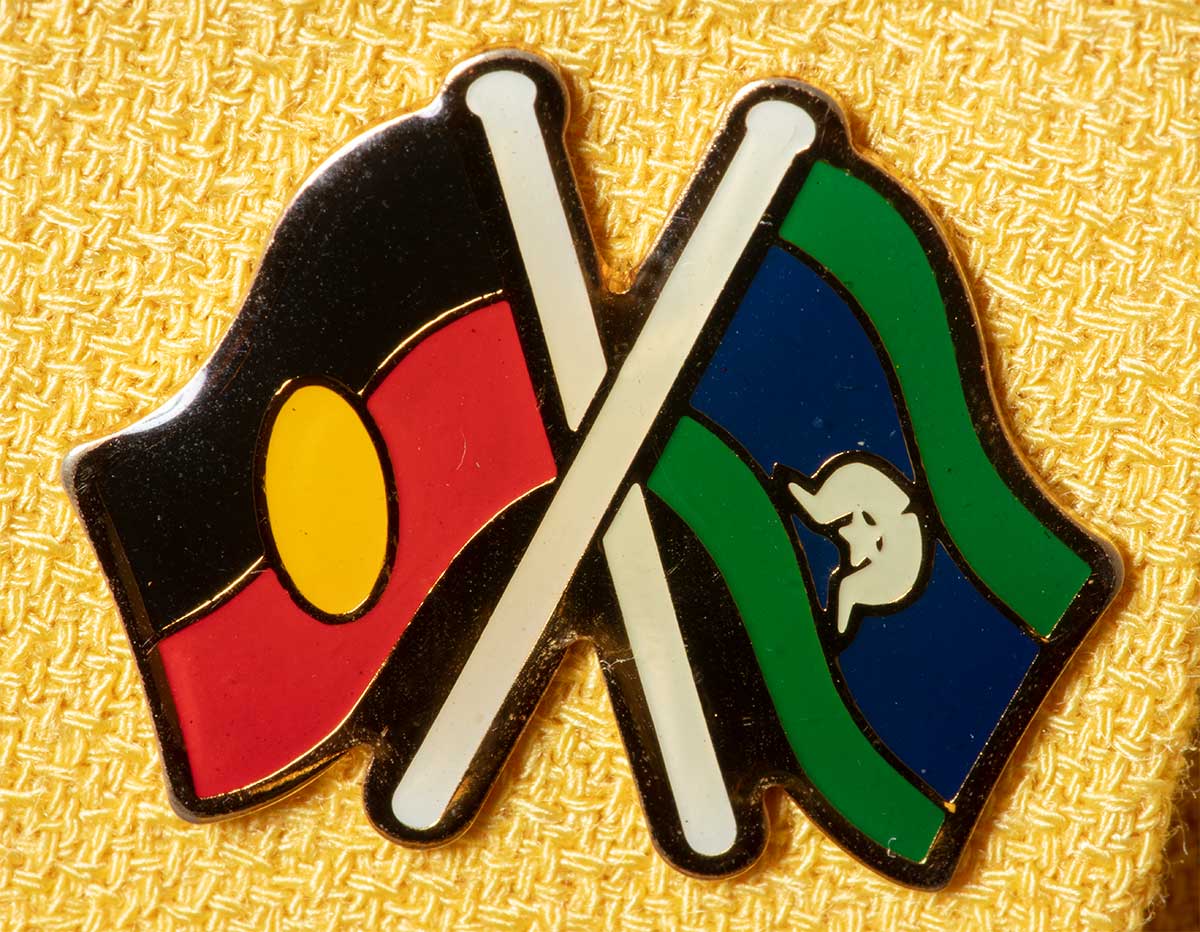
The Aboriginal flag was designed by Luritja man Harold Thomas and first flown in 1971. It represents Aboriginal people (black), the earth (red) and the sun (yellow).
The Torres Strait Islander flag was created by Bernard Namok from Thursday Island in 1992. Its colours denote land (green), sea (blue), people (black) and peace (white). The flag features a dhari (headdress) and a five pointed star, representing the five major island groups.
The Aboriginal and Torres Strait Islander flags both became official Australian flags in 1995.

Cathy Freeman with the Australian and Aboriginal flags at the Sydney Olympics, 2000
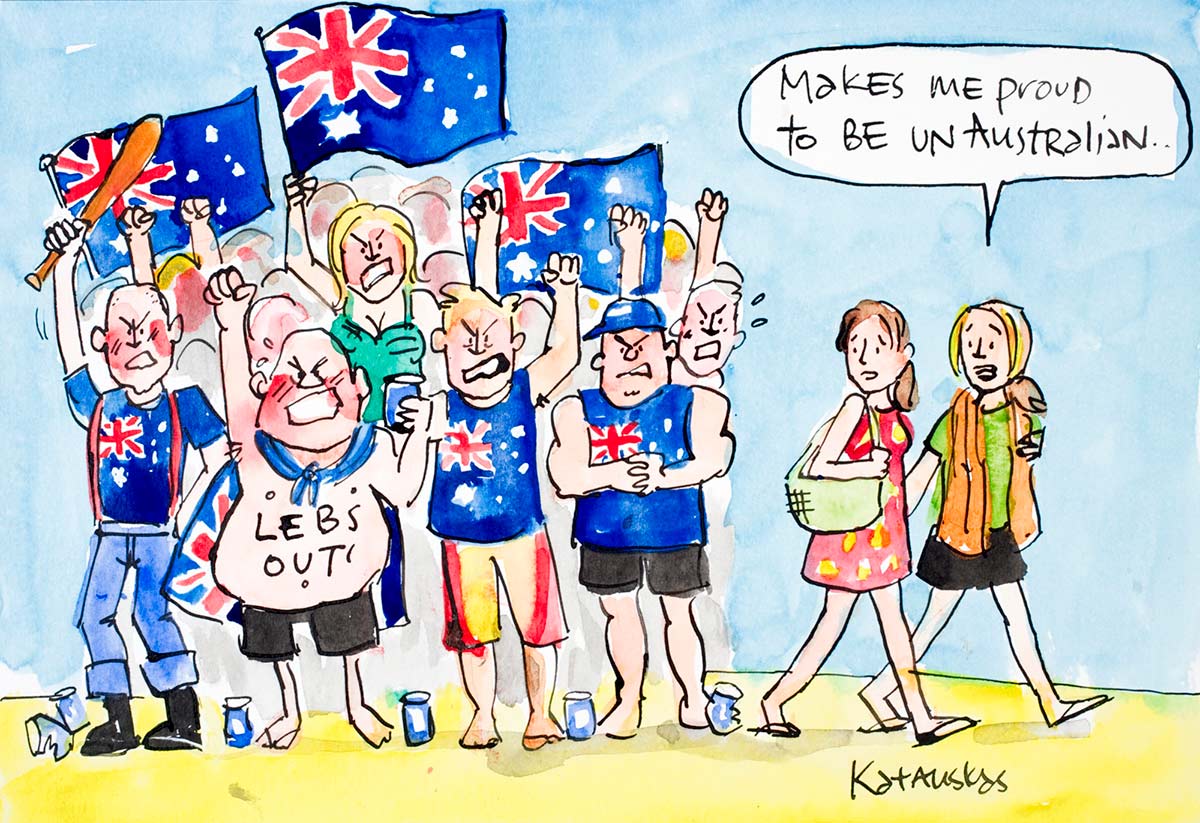
'Proud to Be Un-Australian' by Fiona Katauskas, 2005

A comment on ignorant, blind 'patriotism', 2005
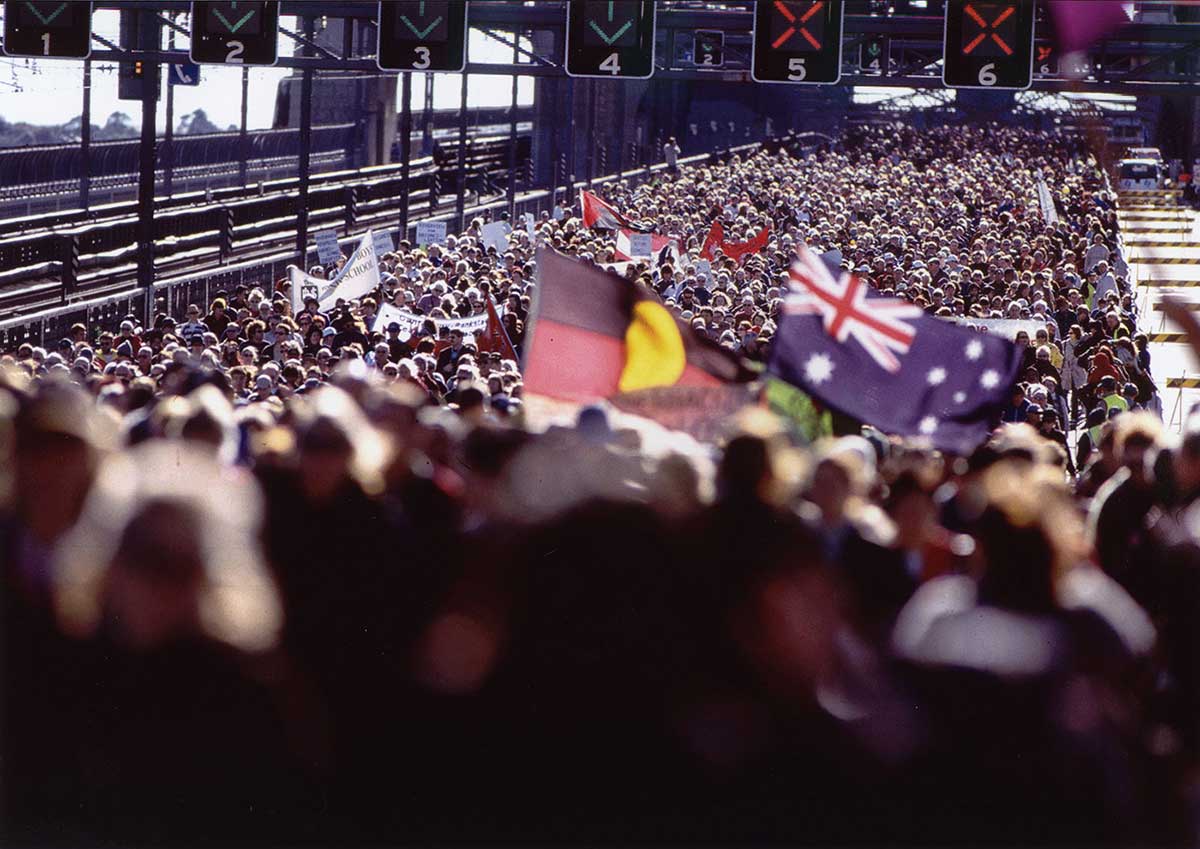
Sydney Harbour Bridge during the Walk for Reconciliation, 2000


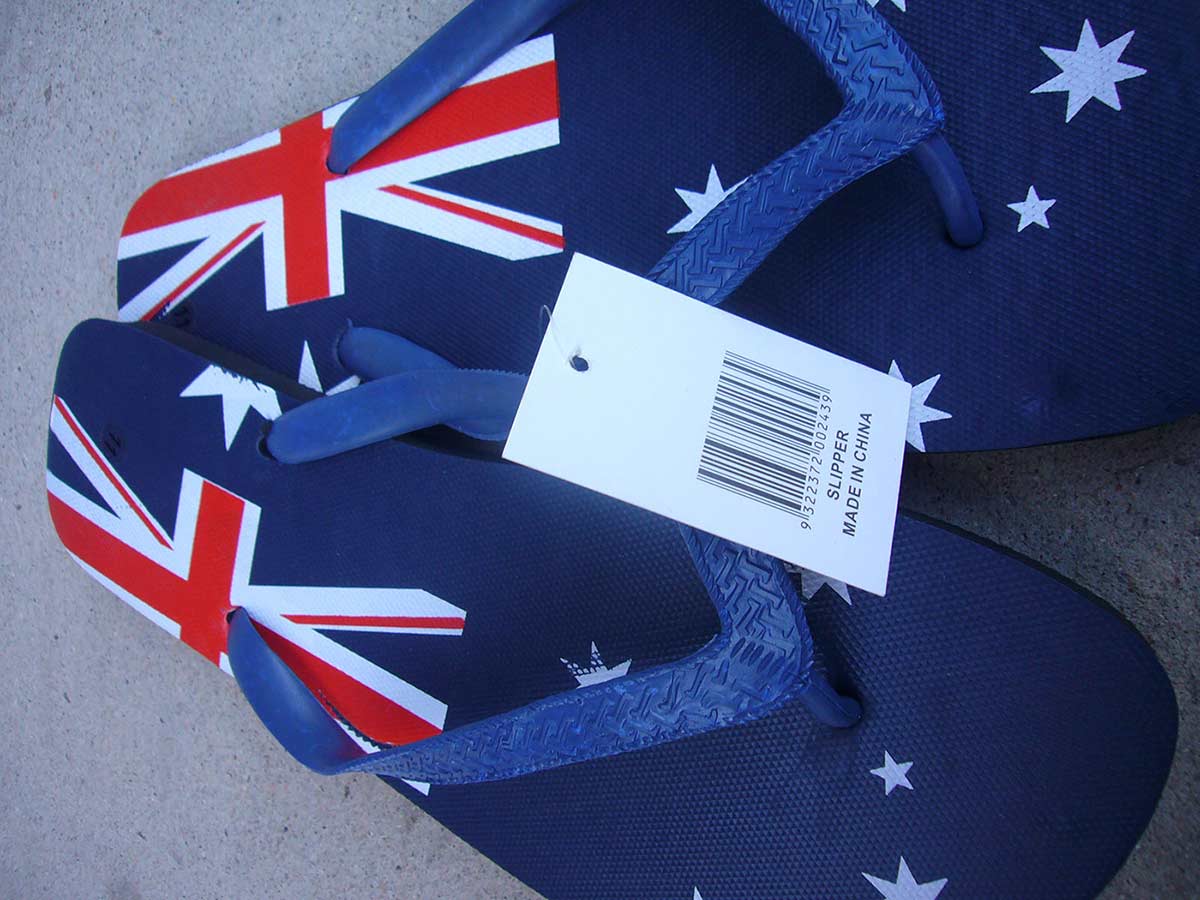

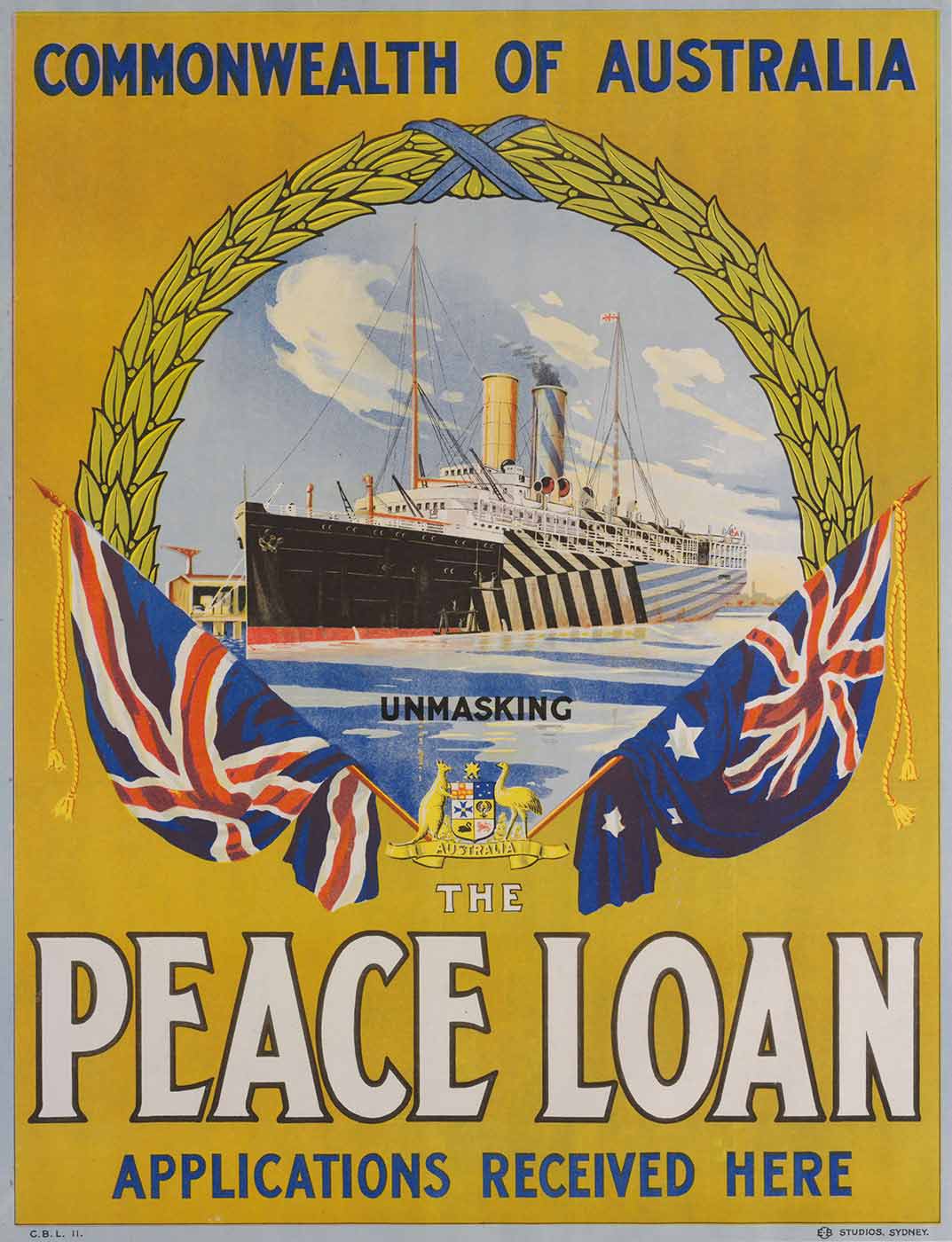
Peace loan poster, 1914–18
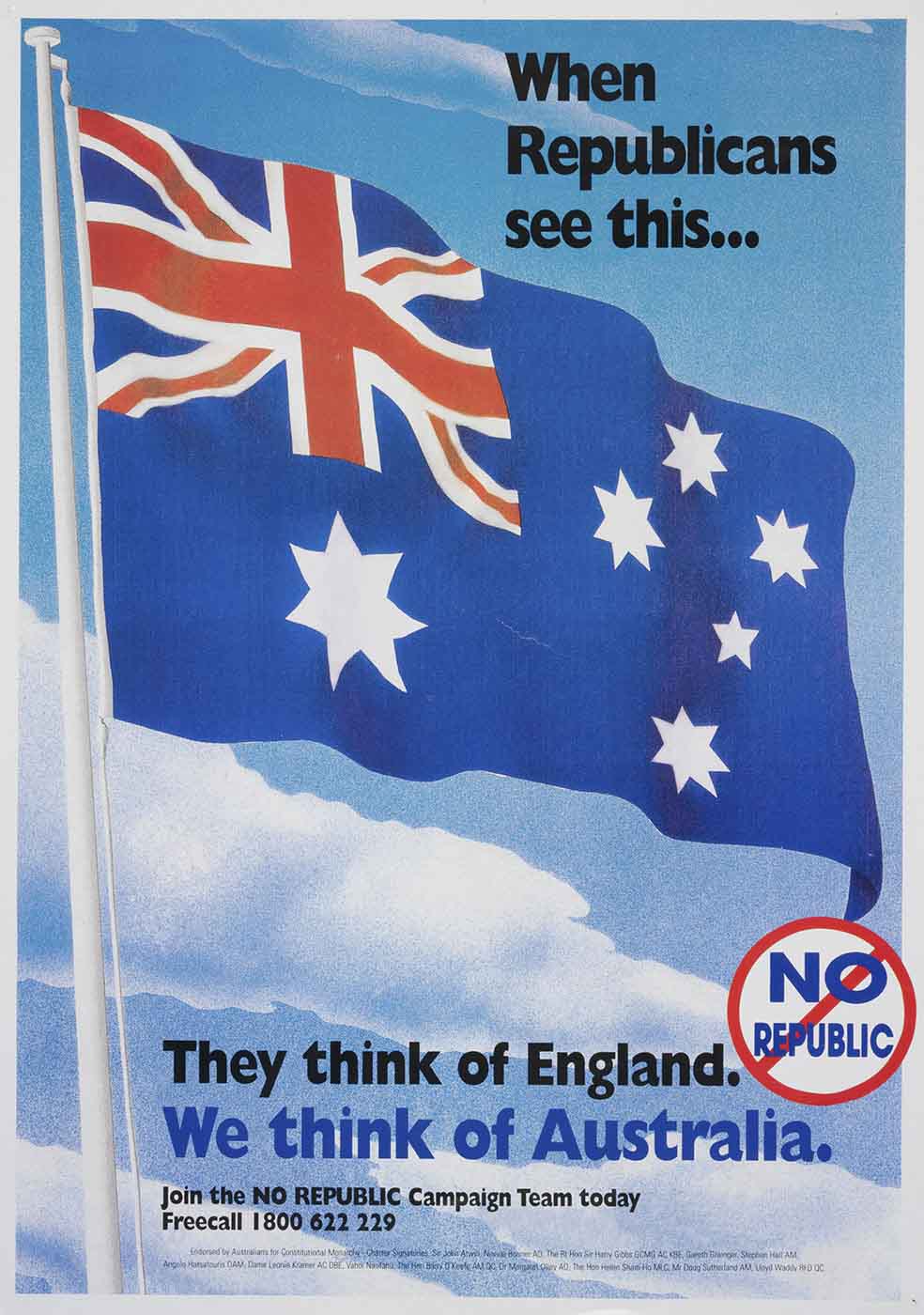
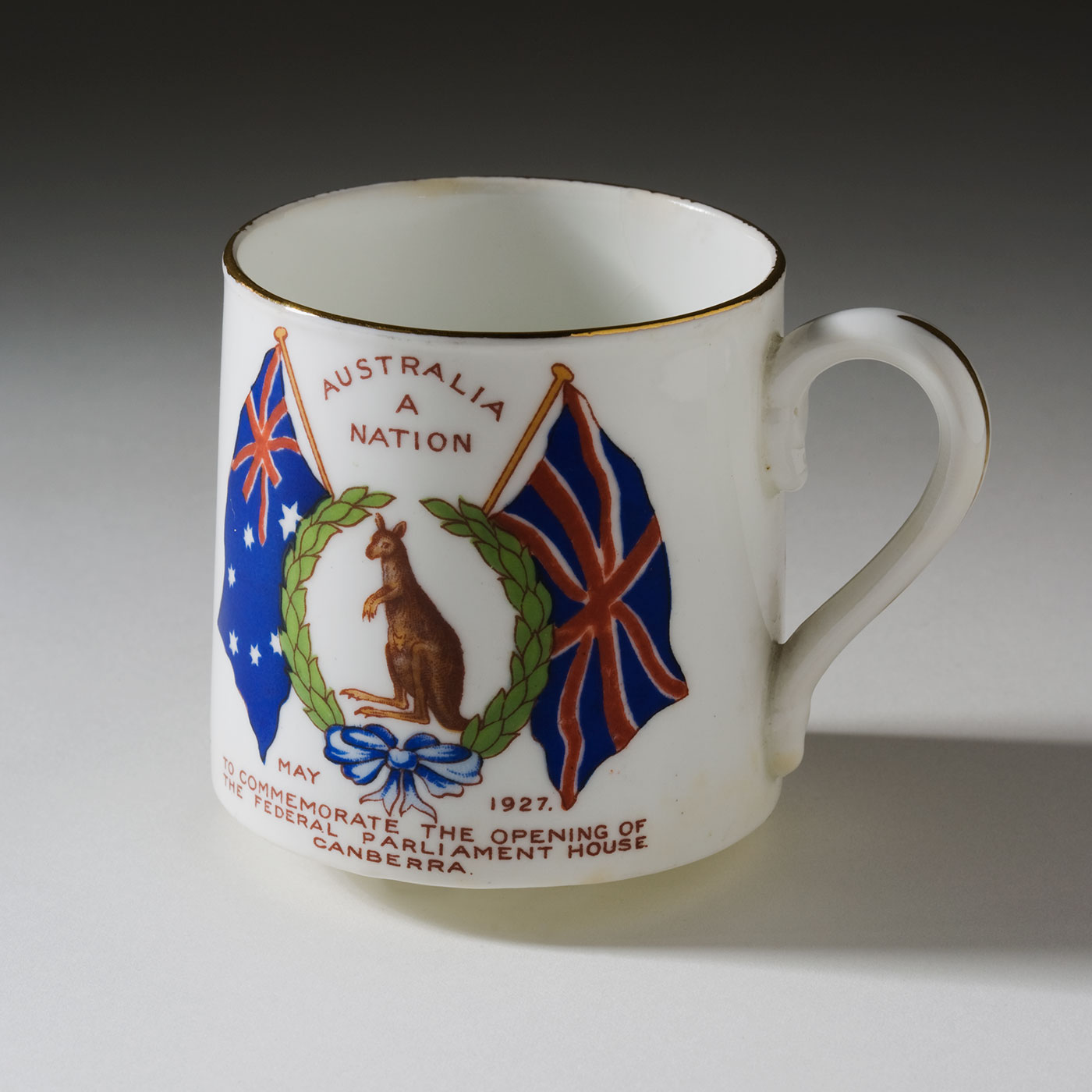
Souvenir mug from the opening of Federal Parliament in Canberra, 1927
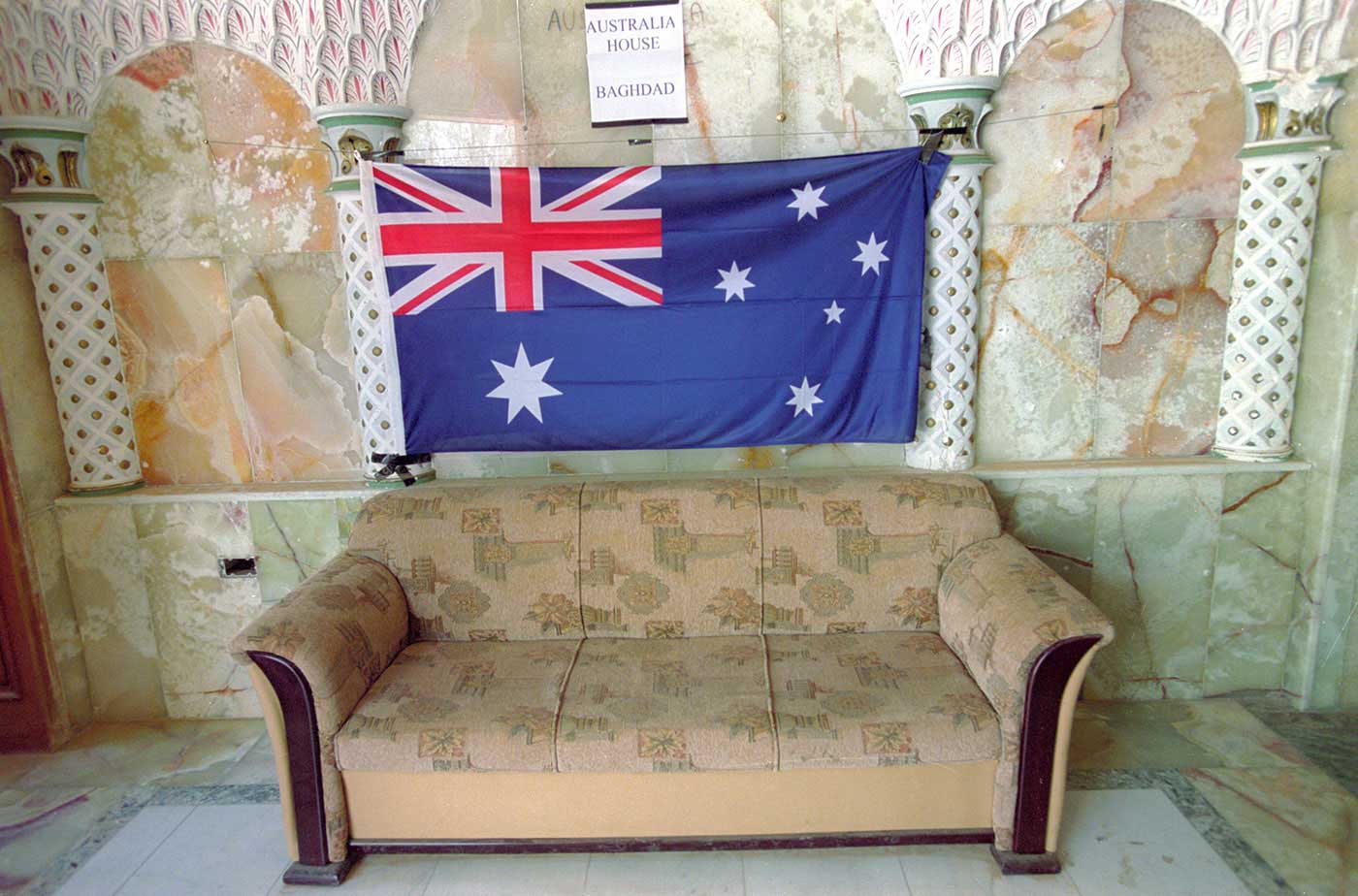
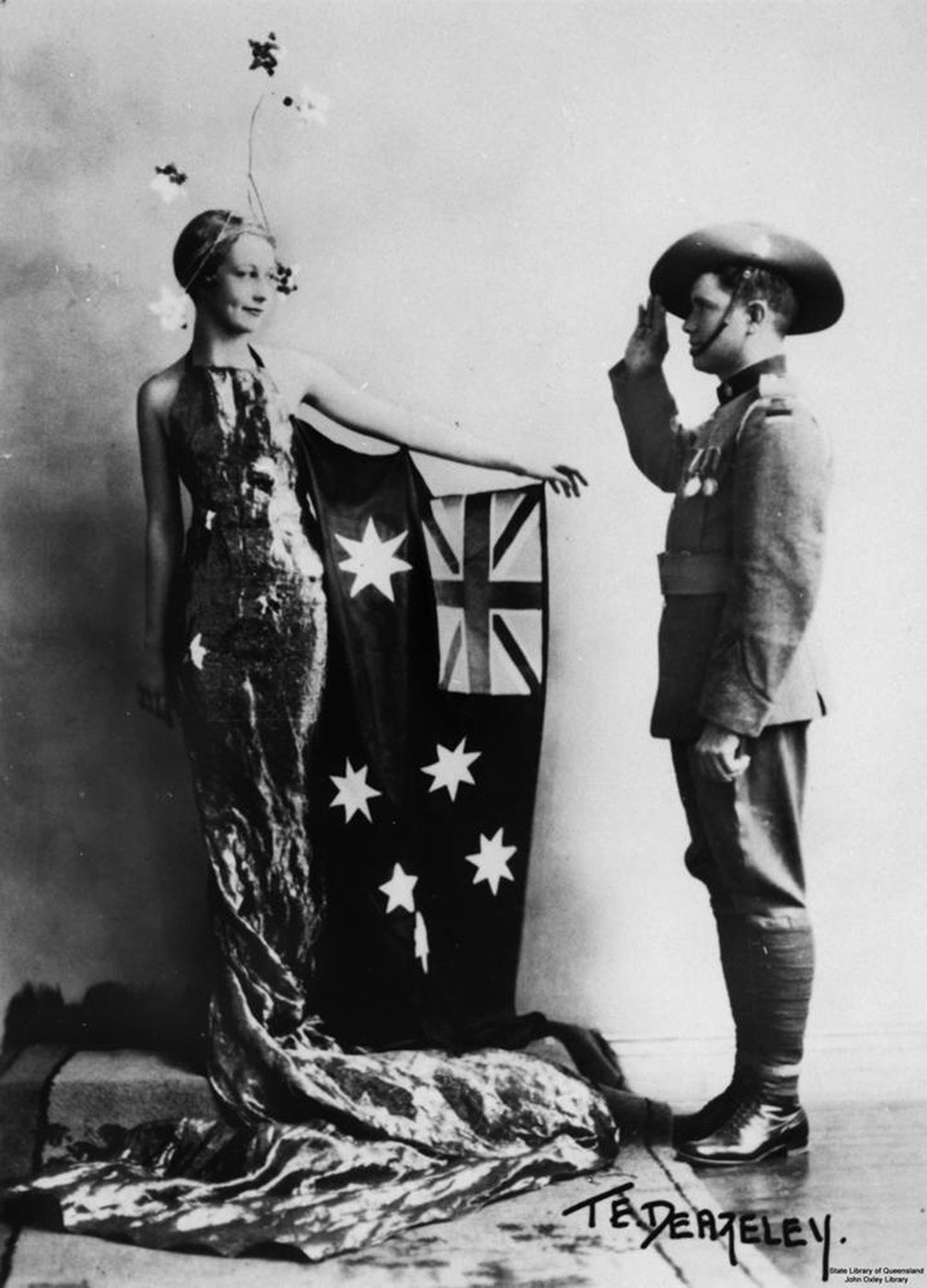
Dramatic society patriotic tableau, 1930–40
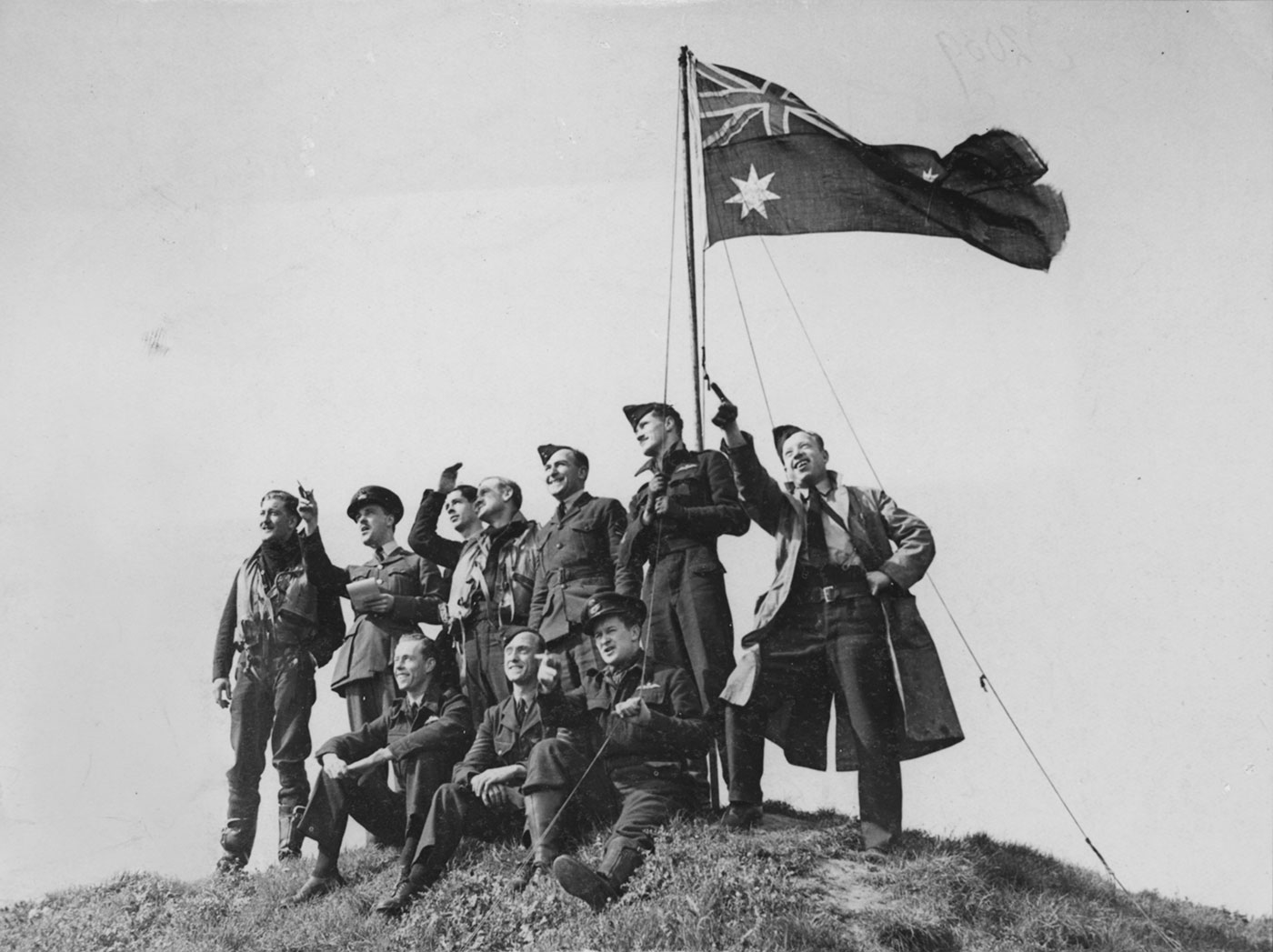
Australian air force crew, 1939–45

Flag burning on 'Invasion Day', 2006

Australia Day flag skirts, 2007
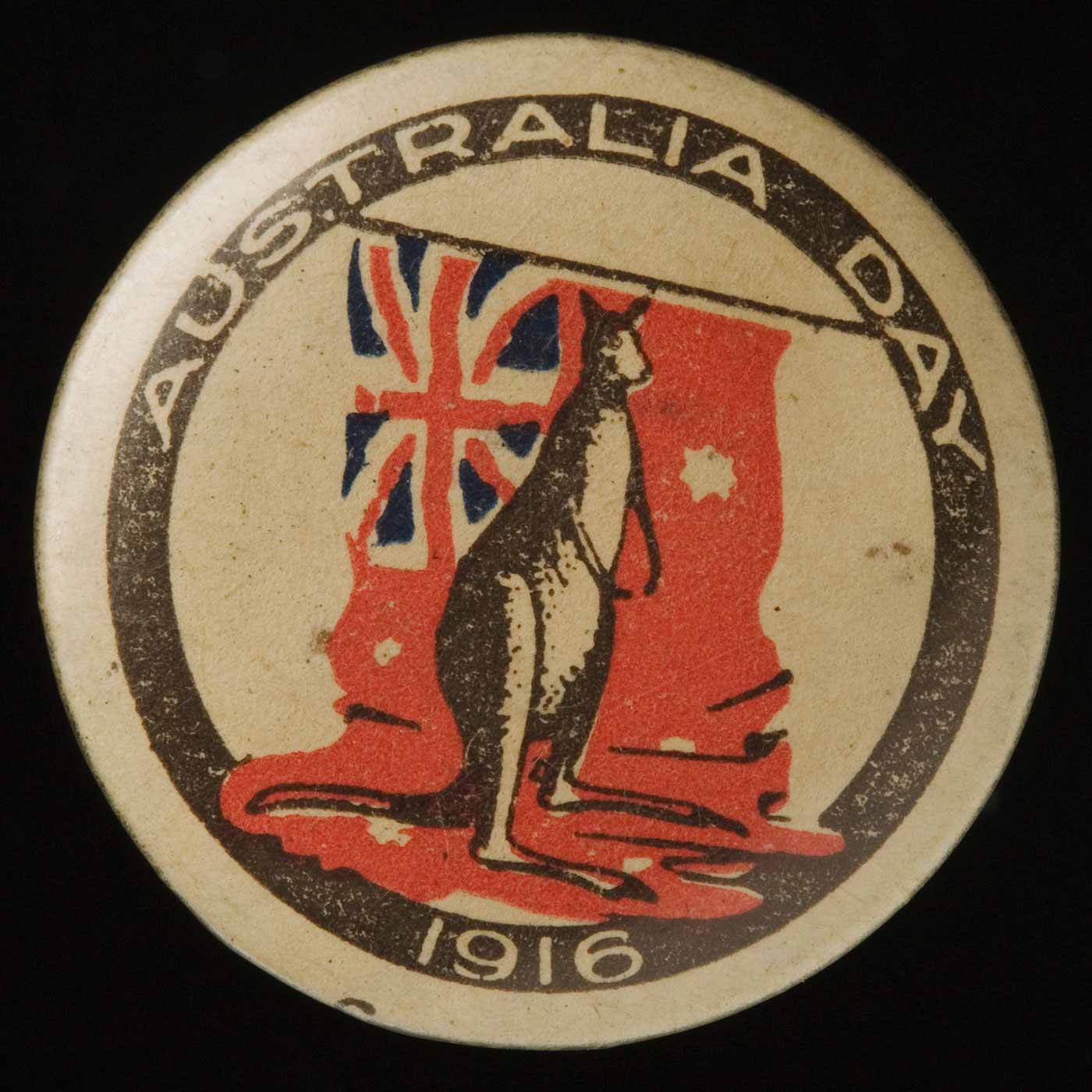
Australia Day badge, 1916
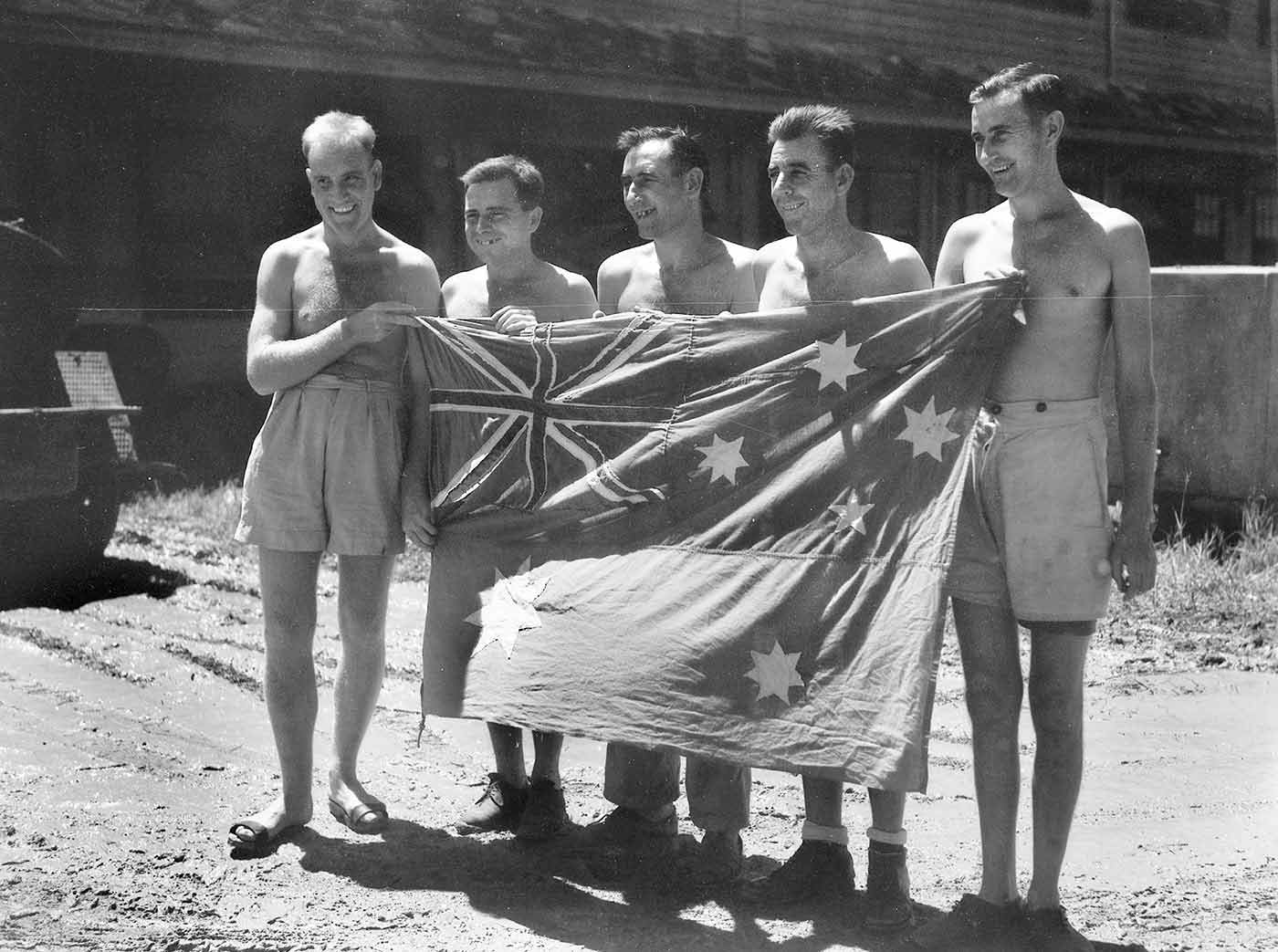
Flag made by Australian ex-POWs from Saigon, 1940s
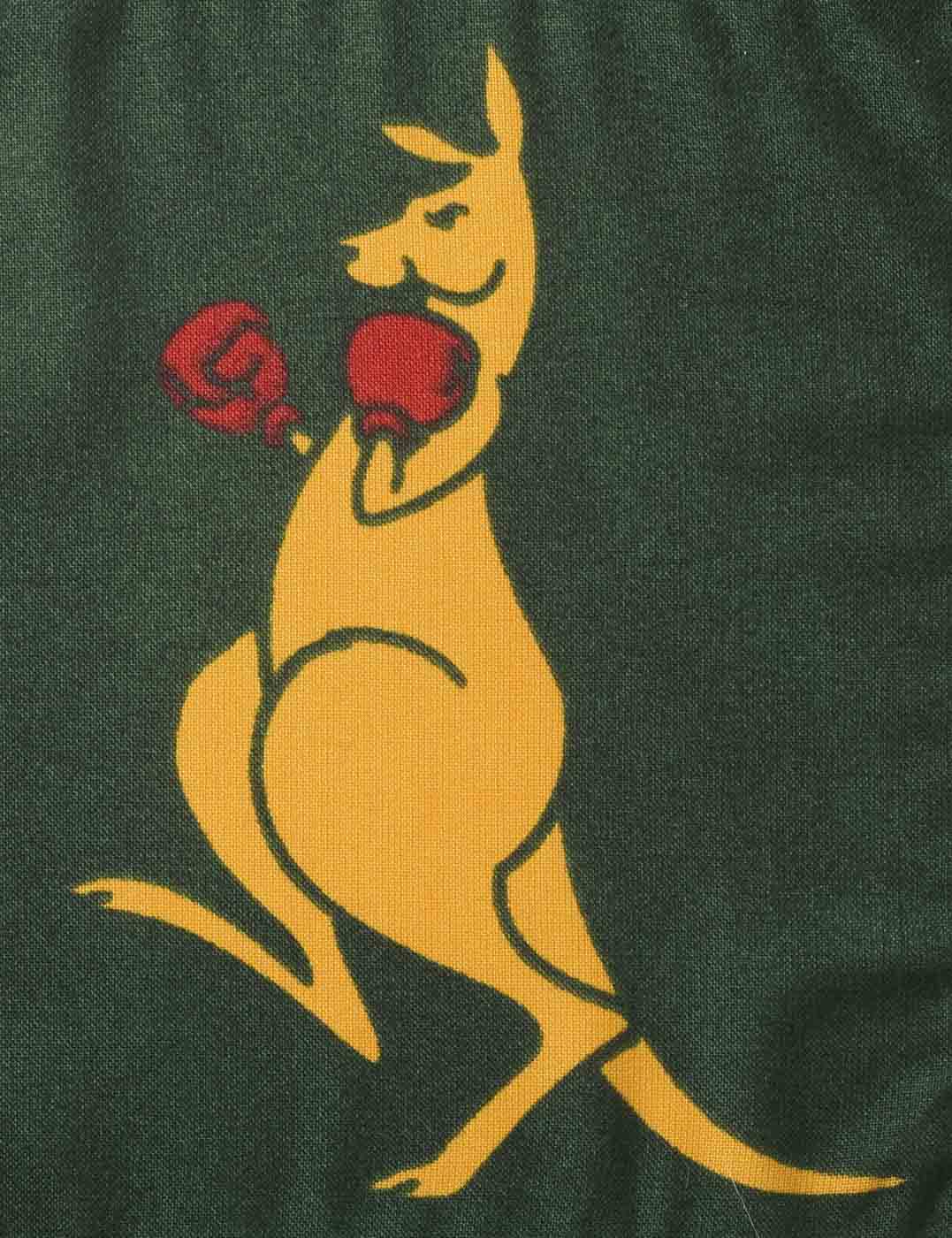
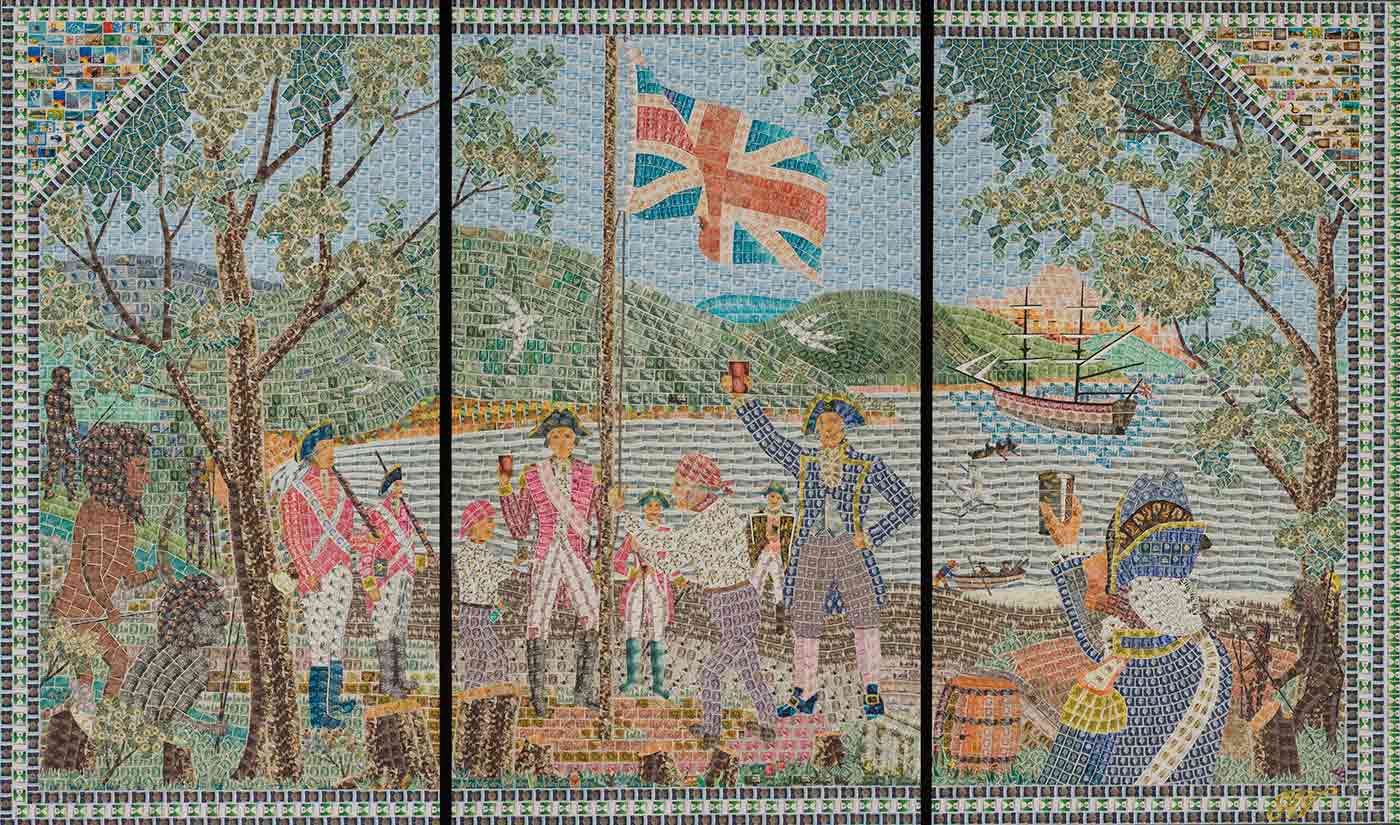
Sydney Cove postage stamp mural, 1980s
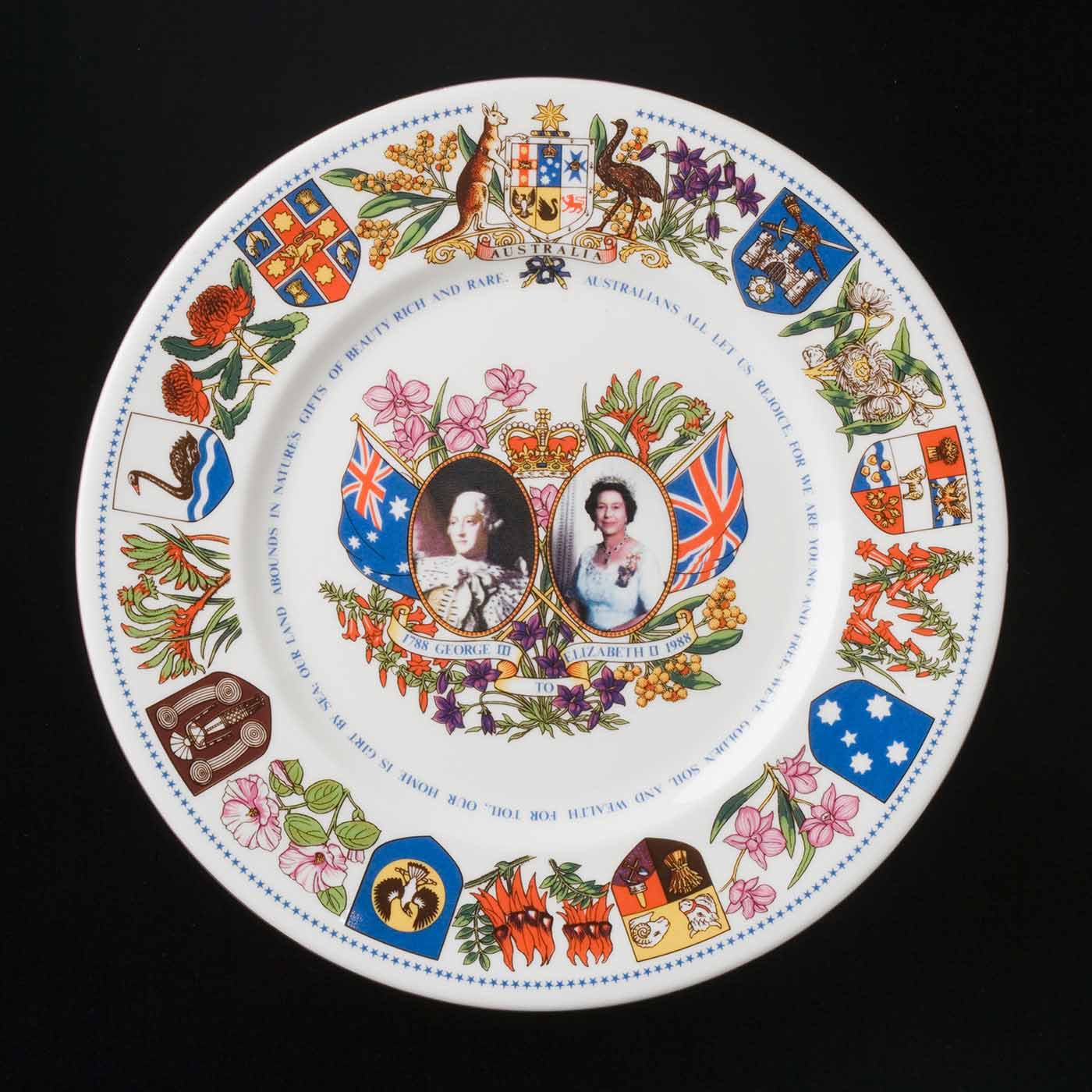
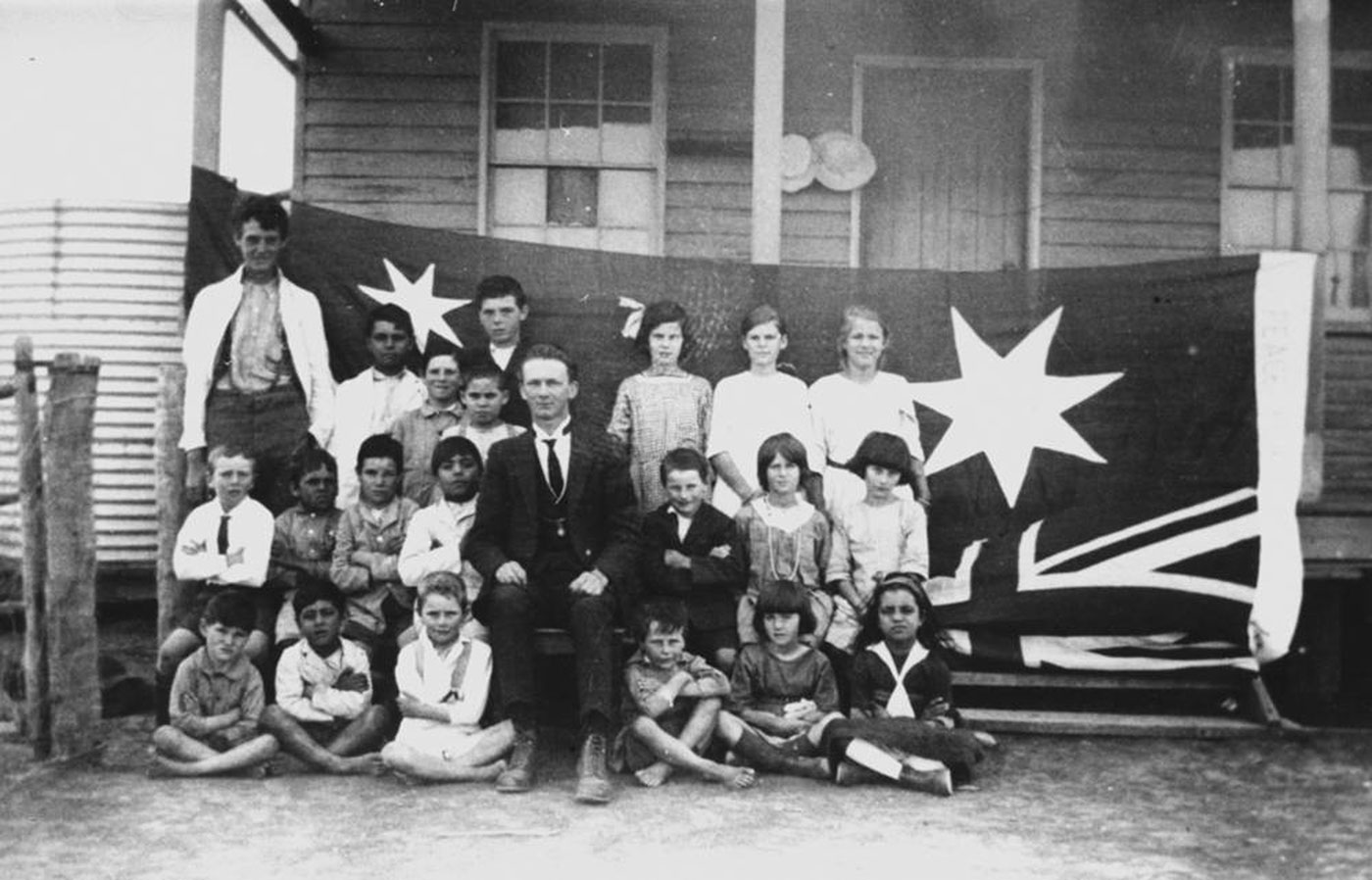
Hebel State School, 1920
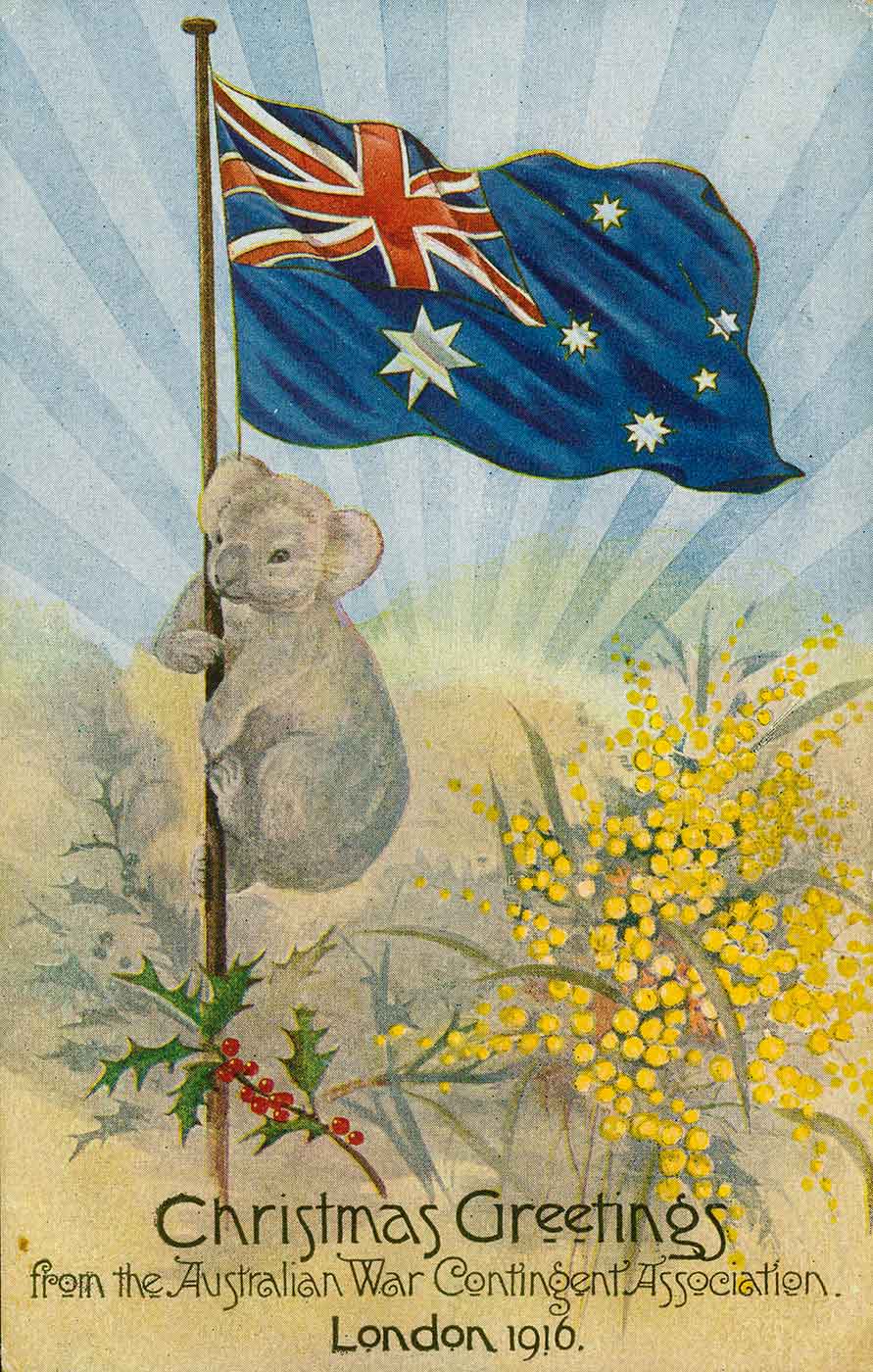
'Christmas greetings' postcard, 1916
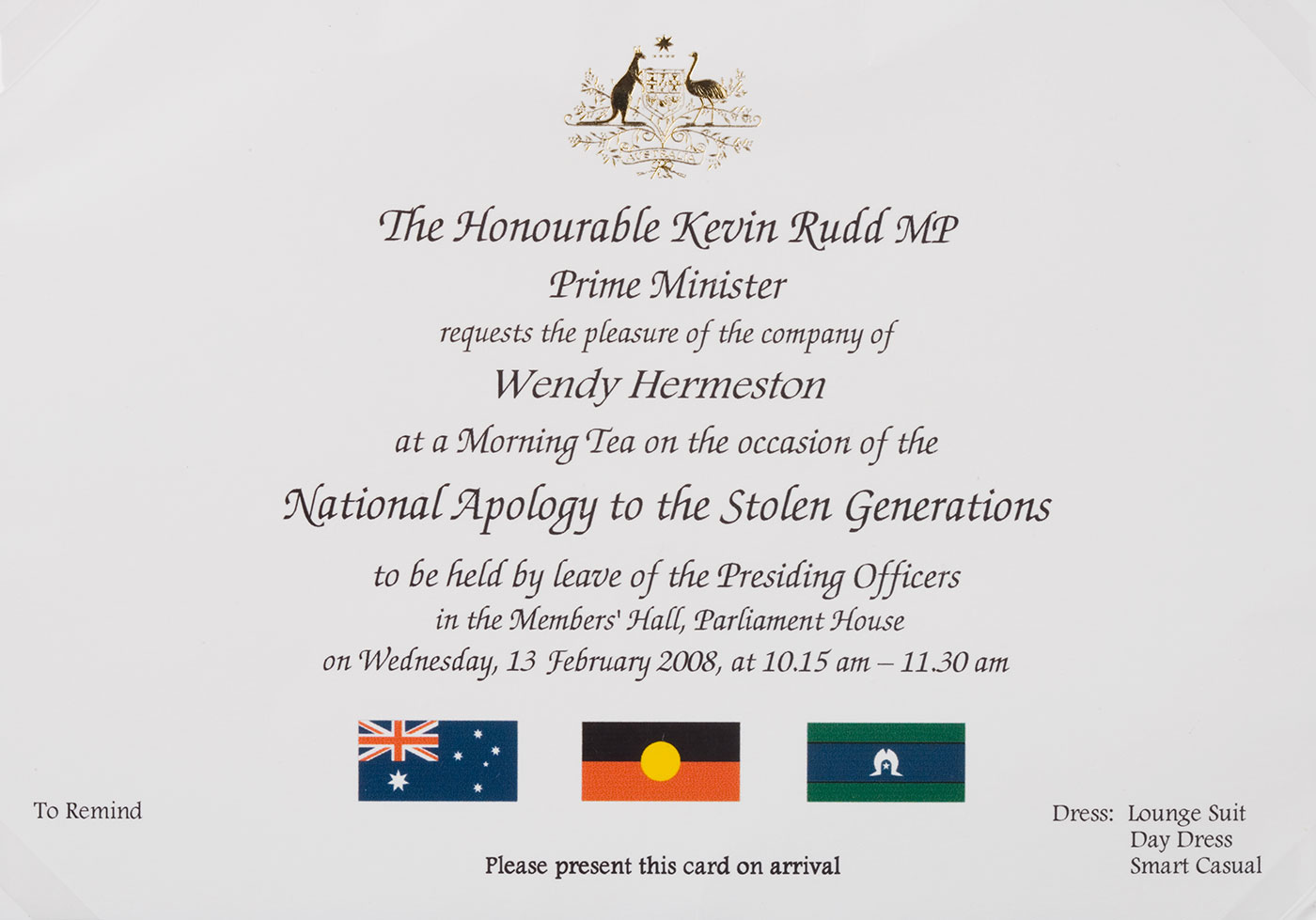
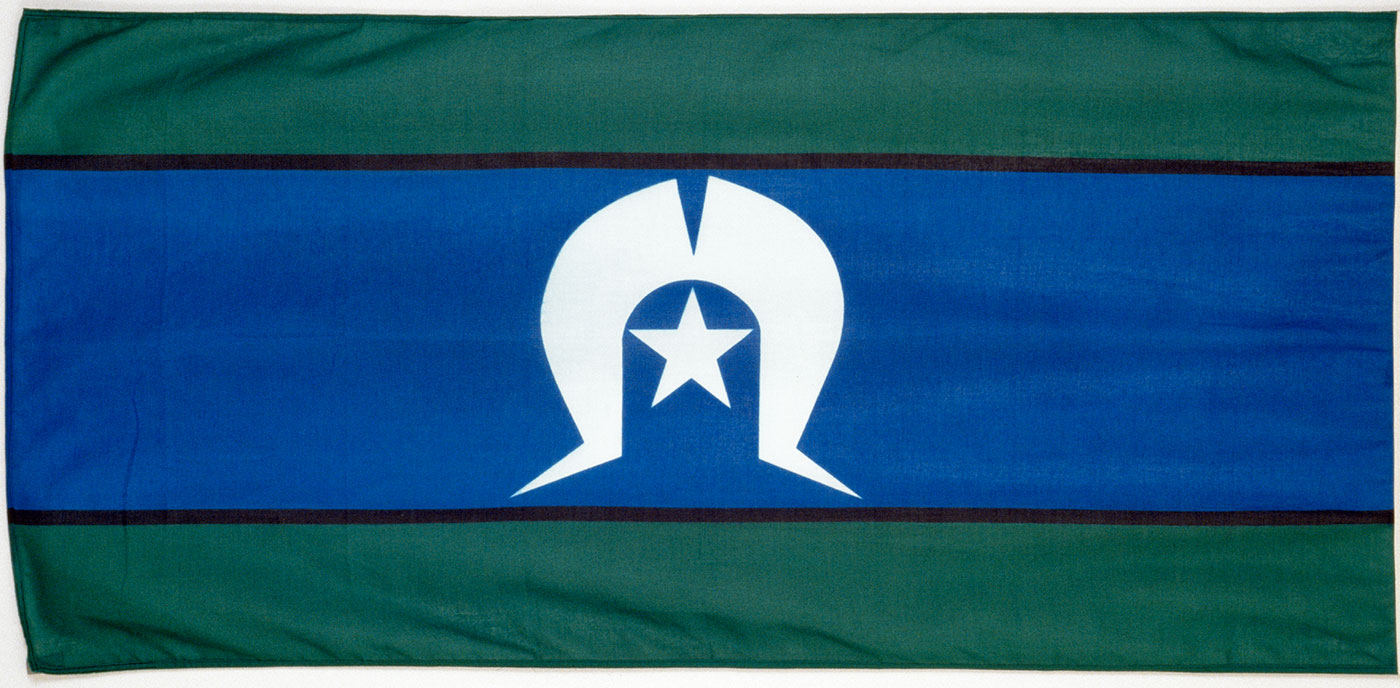
Torres Strait Islander flag

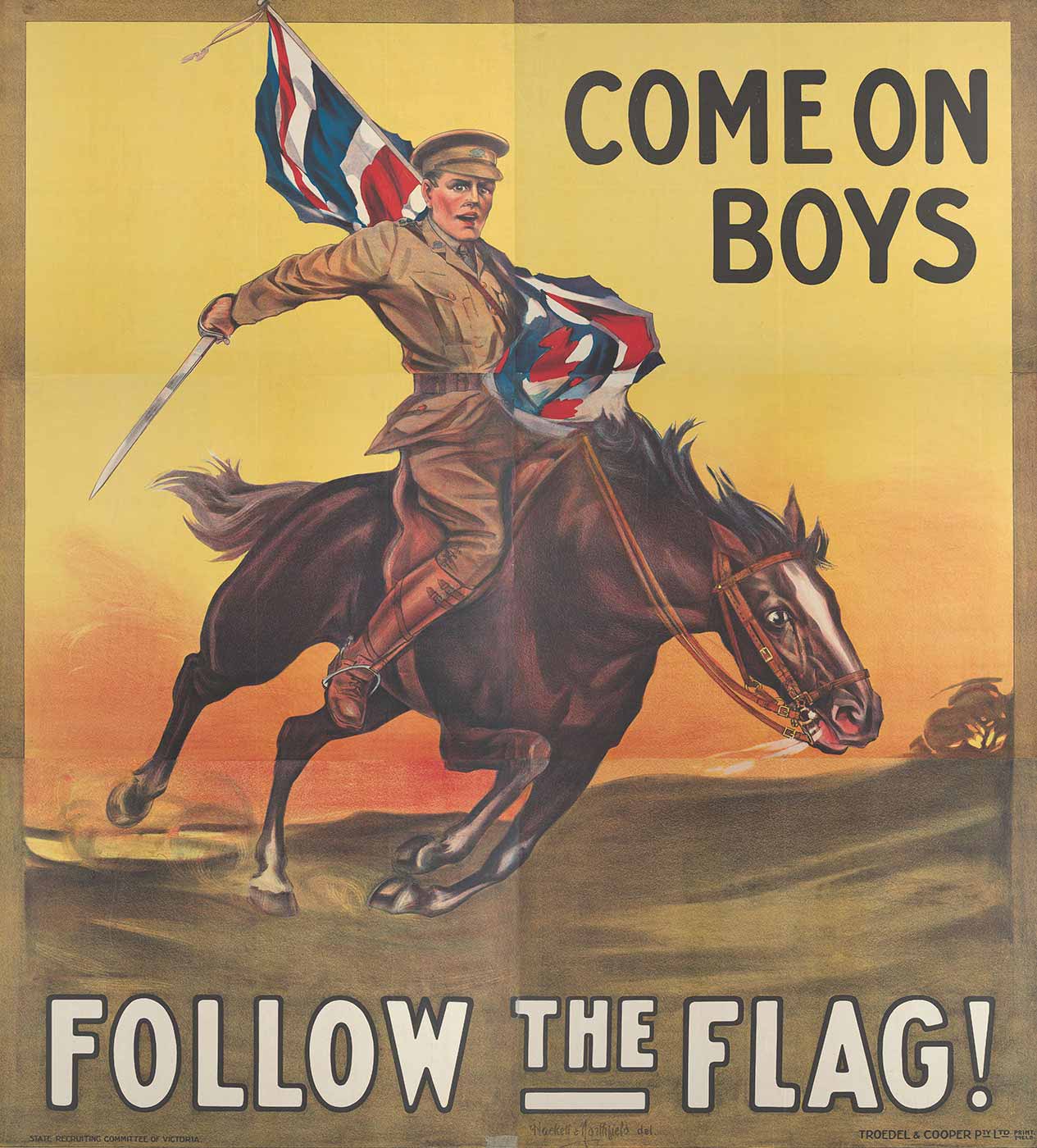

Lone Pine Memorial, 2007

Anzac Day crowd, Gallipoli, 2007
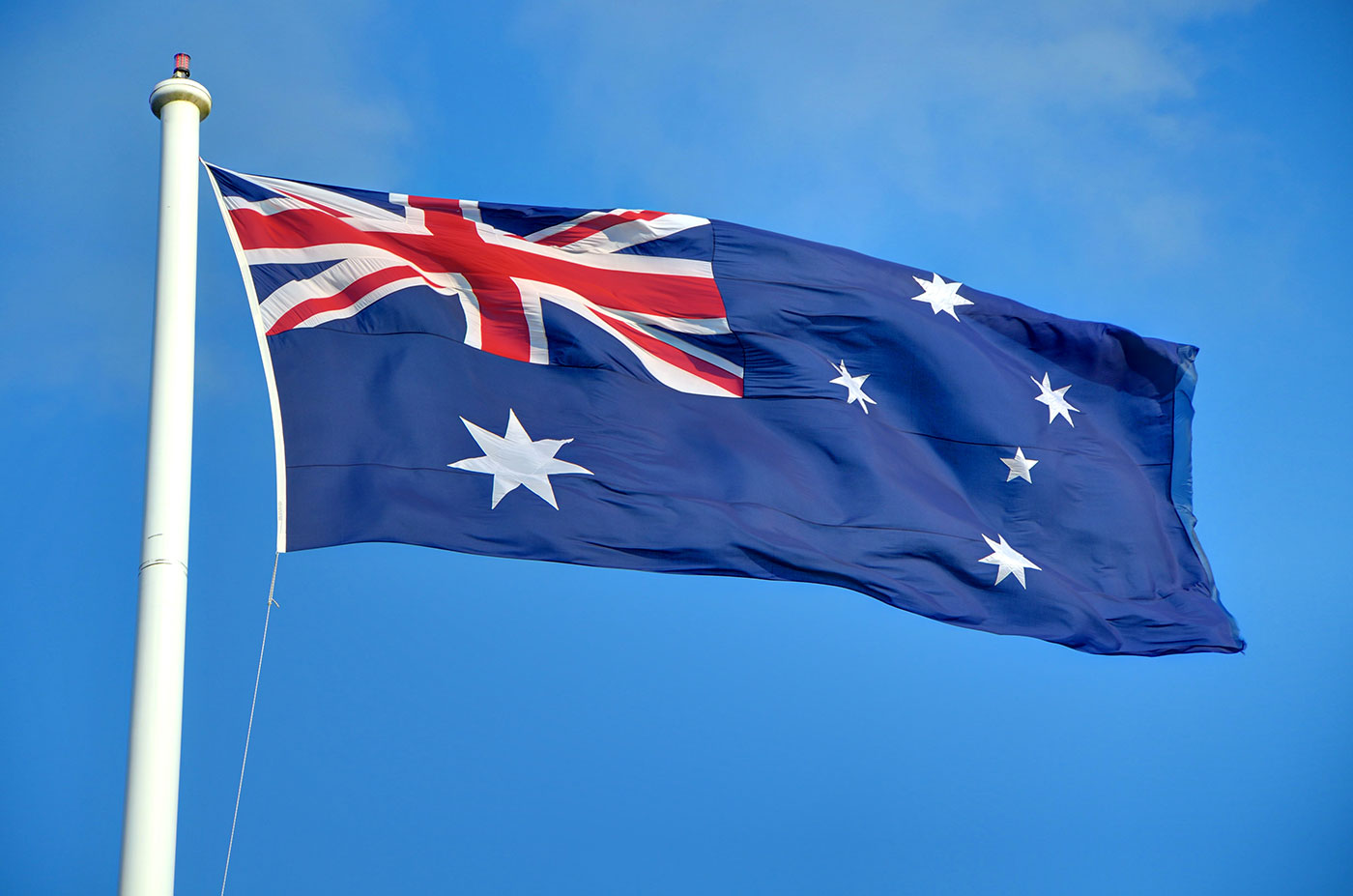
In our collection